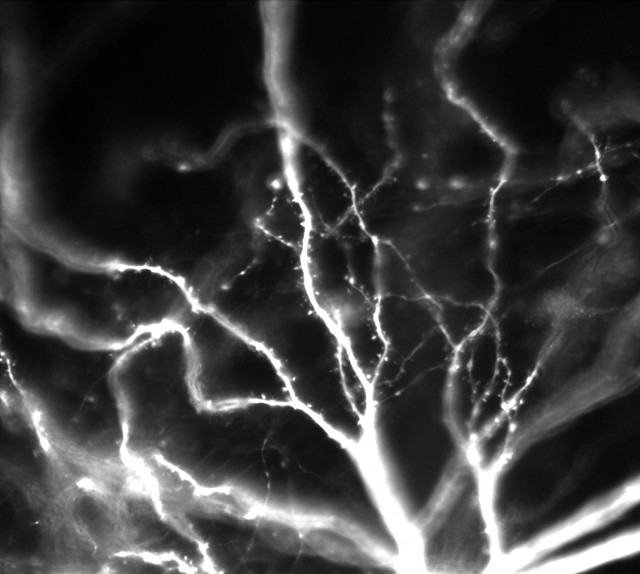
A Search in Synaptic Space
Description
Developing neurons will begin to form physical connections (synapses) with other neurons resulting in the formation of extremely complex networks. Since a neuron can form thousands of synapses and with an average of 100 billion neurons in a human brain, it is no wonder why each person is so unique.
Hippocampal neurons from 1 day old mice were plated on a live-cell imaging chamber. Neurons were transfected with a Dendra-2 containing plasmid which produces a fluorescent protein that is excited by light at 490nm wavelength and emits 509nm light (green) . At 2 weeks, the cultures form mature neuronal networks and the number of synapses formed and eliminated enter an equilibrium state. In this image, the dendrites of a mature neuron are visualized using a standard fluorescent microscope at 60x magnification. Dendritic spines (small, ~5 micron protrusions ) are visible and these are future sites for potential synaptic connections with other neurons. In these specific experiments, we were testing dendra2 as a reporter of translation near dendritic spines.










